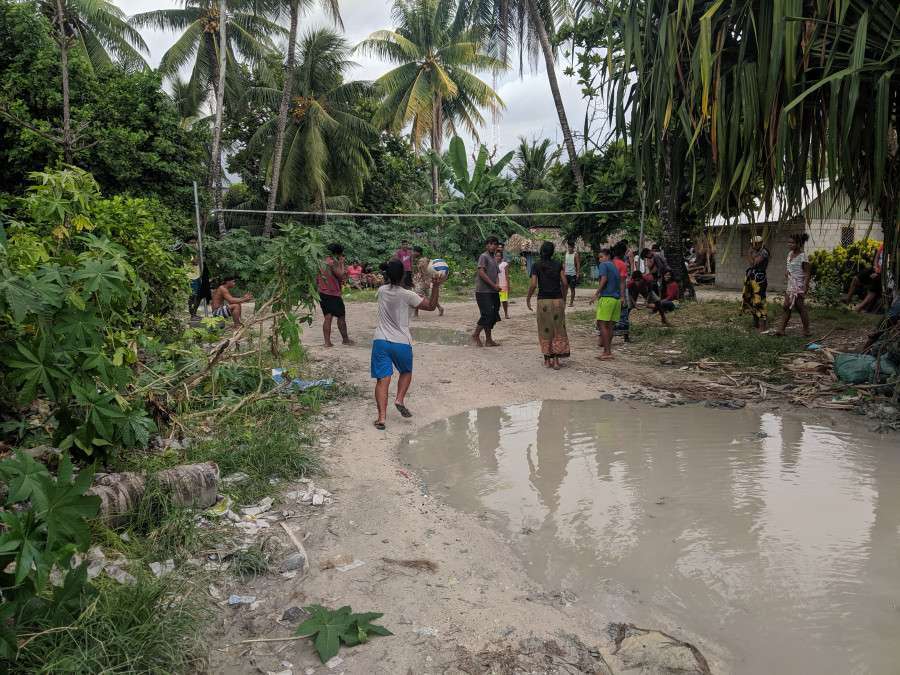
In years to come, climate change will play an increasingly influential role in human mobility around the world. Faced with extreme drought, floods, and sea-level rise, many people will be forced to or choose to leave their homes in search of safety and better livelihoods elsewhere. In most cases, this climate-induced migration will be primarily internal, as people move from one part of the country to another. Researchers from the World Bank predict that by 2050 climate change will drive 216 million people in six regions of the world to migrate within their home countries. Of these six regions, climate-driven migration is perhaps the most immediate and urgent in the Pacific Island Countries (PICs).
As small island developing states, the PICs are physically vulnerable to extreme weather events such as tropical storms and slow-onset events such as sea level rise and increased soil salinity. This has already led to the displacement and migration of people from many coastal communities, as well as significant monetary and social costs of relocation. Yet despite these challenges, several PICs have started to take action. Here are some lessons we can take away from Pacific leaders on how they are confronting climate change and reimagining successful migration.
In regional discussions of climate migration policy, there is growing inclusion of Pacific understandings of well-being. In 2021, researchers at the University of Auckland called on policymakers to ensure the inclusion of Pacific/Indigenous perspectives on well-being into climate-migration research and policy. Recognizing the emotional toll of mobility, they’ve argued to reconsider what “successful migration” really looks like—both internally and internationally. This contributes to a larger conversation about what needs to be in a migration policy. Several key considerations have emerged.
Truly successful relocation is no longer measured just by actual relocation, but also by the ability to protect communities and individuals during these processes. These considerations have already been incorporated into migration policies in PICs like Vanuatu and Fiji as they begin to prepare for more people moving internally due to climate change. These policies are not only context-specific and supportive towards existing national climate frameworks, but also make sure to include Pacific/Indigenous perspectives by highlighting respect for customs, community inclusion, and efforts to protect well-being.

For instance, Vanuatu is one of the first countries globally to develop a comprehensive policy—National Policy on Climate Change and Disaster-Induced Displacement—on internal displacement stemming from disasters and climate change. Released in 2018, this policy recognizes the complexities of migration and how climate change is often not the sole or primary driver behind the decision to migrate. Its goal is to minimize the drivers of displacement and provide solutions for displaced people. Among its 12 strategic objectives, there are several objectives that emphasize the importance of Pacific/Indigenous perspectives related to land, well-being, and traditional knowledge. The policy also recognizes the customary ownership of land and has mechanisms to acquire land for future migration and relocation.
Another country at the forefront of climate migration policymaking is Fiji. The country’s Planned Relocation Guidelines are a living document that recognizes that some communities and structures will have to be permanently relocated to save lives, protect livelihoods, and prevent social disruption. Yet they also emphasize that community relocation is an option of last resort after all other feasible actions have been considered. The Fiji Government takes a human-rights based approach throughout the process. These guidelines take into consideration the various stages of mobility—decision, planning, and implementation—and involve both State and non-State actors. There is an emphasis on community cohesion throughout this process and on ensuring the representation and inclusion of vulnerable populations.

On top of the social and mental costs of migration, countries are also dealing with the financial tolls of climate displacement and village relocations. For example, in 2014, the Fijian government contributed more than $345,000 to the relocation of the small coastal village, Vunidogoloa, while the villagers themselves paid about $100,000—and that’s just one village, out of thousands more that will need to relocate over the coming decades. The next steps for countries like Fiji and Vanuatu are to mainstream these recommended actions into planning and budgeting frameworks and identify the resources necessary for implementation. These country-owned plans provide ample entry points for development partners to provide technical and financial support.
Faced with the immediate impacts of climate change and internal migration, PICs have risen to the challenge and can lead by example. By including these considerations of community, inclusion, and well-being, they have shown us what it looks like to implement these ideas into policy and how to do it in a way that takes care of individuals.
When talking about these large numbers of internal migrants, it becomes easy to forget that each number stands for a person’s life being changed completely. Every person deserves to have the respect and support they need when facing the impacts of climate change and considering leaving their homes. Climate change and its impact on people is something that cannot be put to the side any longer. Action needs to happen now, and at the same time, all actions should be socially conscious and inclusive—a reminder of our shared humanity throughout all of this.